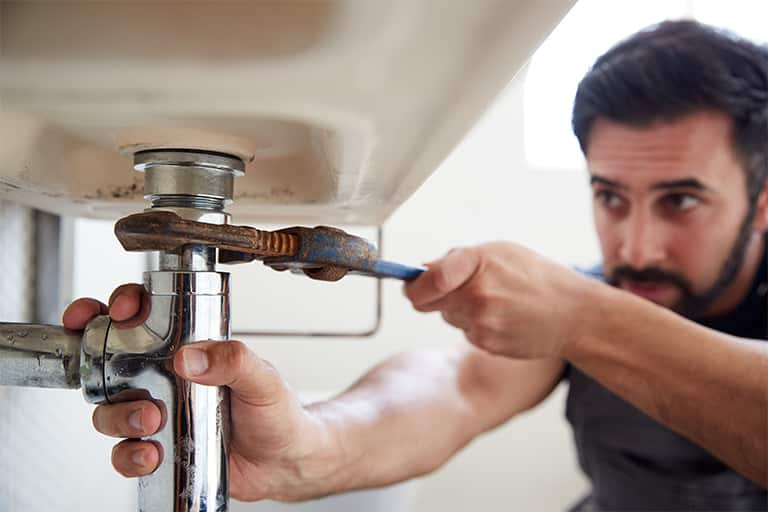6 Ways to Find Concealed Water Leakages in Your Residence
6 Ways to Find Concealed Water Leakages in Your Residence
Blog Article
What're your beliefs about Detecting hidden plumbing leaks?

Early detection of dripping water lines can minimize a possible calamity. Some little water leaks may not be visible.
1. Take A Look At the Water Meter
Every home has a water meter. Inspecting it is a surefire way that helps you find leaks. For beginners, turn off all the water sources. Guarantee no one will flush, use the faucet, shower, run the cleaning machine or dish washer. From there, most likely to the meter as well as watch if it will alter. Since nobody is utilizing it, there should be no movements. That shows a fast-moving leak if it moves. If you find no adjustments, wait an hour or two and also inspect back once more. This indicates you may have a slow-moving leakage that could even be underground.
2. Examine Water Intake
Evaluate your water bills and also track your water intake. As the one paying it, you must notice if there are any type of disparities. If you detect sudden changes, regardless of your consumption being the same, it implies that you have leaks in your plumbing system. Remember, your water expense ought to drop under the very same variety every month. An unexpected spike in your bill suggests a fast-moving leak.
At the same time, a constant increase every month, even with the very same practices, shows you have a slow-moving leakage that's likewise gradually rising. Call a plumber to thoroughly inspect your residential property, particularly if you really feel a warm area on your floor with piping below.
3. Do a Food Coloring Test
When it comes to water usage, 30% originates from toilets. Examination to see if they are running correctly. Drop flecks of food shade in the storage tank and wait 10 mins. There's a leakage in between the container and dish if the shade somehow infiltrates your dish during that time without flushing.
4. Asses Exterior Lines
Don't fail to remember to inspect your exterior water lines too. Ought to water permeate out of the link, you have a loosened rubber gasket. One tiny leakage can waste tons of water and also spike your water costs.
5. Check as well as Analyze the Circumstance
House owners ought to make it a practice to examine under the sink counters as well as also inside closets for any bad odor or mold and mildew growth. These 2 warnings indicate a leak so timely focus is required. Doing routine evaluations, even bi-annually, can save you from a significant problem.
Examine for stainings as well as damaging as most pipelines and also devices have a life expectations. If you suspect leaking water lines in your plumbing system, do not wait for it to rise.
Early detection of leaking water lines can minimize a potential disaster. Some small water leakages may not be noticeable. Inspecting it is a proven method that assists you find leaks. One tiny leakage can lose heaps of water and spike your water costs.
If you presume dripping water lines in your plumbing system, don't wait for it to escalate.
WARNING SIGNS OF WATER LEAKAGE BEHIND THE WALL
PERSISTENT MUSTY ODORS
As water slowly drips from a leaky pipe inside the wall, flooring and sheetrock stay damp and develop an odor similar to wet cardboard. It generates a musty smell that can help you find hidden leaks.
MOLD IN UNUSUAL AREAS
Mold usually grows in wet areas like kitchens, baths and laundry rooms. If you spot the stuff on walls or baseboards in other rooms of the house, it’s a good indicator of undetected water leaks.
STAINS THAT GROW
When mold thrives around a leaky pipe, it sometimes takes hold on the inside surface of the affected wall. A growing stain on otherwise clean sheetrock is often your sign of a hidden plumbing problem.
PEELING OR BUBBLING WALLPAPER / PAINT
This clue is easy to miss in rooms that don’t get much use. When you see wallpaper separating along seams or paint bubbling or flaking off the wall, blame sheetrock that stays wet because of an undetected leak.
BUCKLED CEILINGS AND STAINED FLOORS
If ceilings or floors in bathrooms, kitchens or laundry areas develop structural problems, don’t rule out constant damp inside the walls. Wet sheetrock can affect adjacent framing, flooring and ceilings.
https://www.servicemasterbyzaba.com/blog/how-to-detect-water-leakage-in-walls/

I am very taken with Hacks to detect leaks and I hope you appreciated the entire blog post. Sharing is caring. Helping others is fun. We treasure reading our article about Locating water leaks.
Report this page